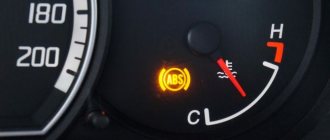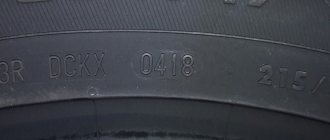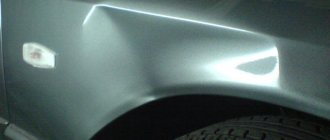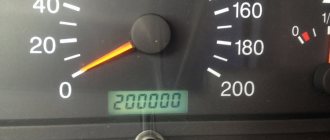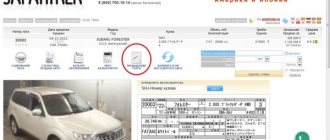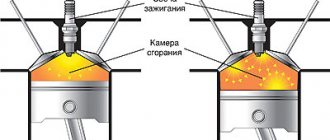Car manufacturers, in the documents provided with the vehicle, indicate the most acceptable indicators, according to its characteristics and operating mode. The documentation gives recommendations on what type of fuel the car should be filled with, indicating the octane number. Fuel of one such indicator sometimes differs from another if it is filled at different gas stations. How to check fuel quality can be found in this article.
What problems can arise with a car due to low-quality gasoline?
Many vehicle owners are aware of serious troubles that occur due to the use of low-quality fuel.
The most common situations that car owners suffer from:
— replacement of spark plugs. If you regularly fill your car with bad fuel, a red coating may form on the spark plugs, which means they are unusable;
— incorrect operation of the catalyst;
— wear of all elements of the fuel system: fuel pump, filters and injectors.
These are the most common signs by which it is possible to check the quality of gasoline.
We check the fuel ourselves - the main ideas and methods
There are options and opportunities to do without a laboratory. In this case, you will have to independently carry out a qualitative determination of one or another factor associated with fuel. For example, experts and experienced drivers recommend paying attention to two important factors - the cost and the smell of the fuel. If gasoline is too cheap, it is unlikely to contain the best and safest chemicals. This fuel will likely have a low octane rating and will smell similar to crude oil. Among the more accurate verification methods, the following features can be highlighted:
- when the car is in full technical condition, the engine begins to work unstably, and consumption gradually increases - you have poured a real cocktail of chemical elements into the car’s tank;
- drop gasoline onto a white sheet of paper, and then watch the reaction - the fuel will evaporate, but all the incorrect elements will remain on the sheet, the paper may be acidic or greasy, which indicates excess additives and oils;
- you can also pour a little gasoline on the glass and set it on fire - if in this case there are no traces left, the gasoline will burn completely, the fuel is good, if there are black, brown or yellow stains, we can conclude that there is too much resin in the gasoline;
- when adding potassium permanganate to gasoline, previously diluted with water, you will see the purple color of the dissolution of potassium permanganate, but in pure gasoline this element does not dissolve and does not enter into chemical reactions;
- deliberately smear your hands with oil, and then use gasoline to wash them - if you can do this, then the gasoline is of quite high quality, but if the fuel does not wash away the oil, you should not fill the car with it.
You can find many additional and unusual ways to test fuel for quality. However, you also need to trust your intuition. If you don't feel like filling up at a certain station, just don't. It is much better and easier to fill up with gas at the station that you always use. By the way, regular refueling at one station, and then checking the car at a service station at the time of regular maintenance is also an important option for performing a high-quality fuel check. If your car has already traveled tens of thousands of kilometers without problems or problems, the gasoline is quite good. We offer a short video with an option for testing fuel at one of the Lipetsk gas stations:
How to check gasoline at home.
You can understand whether the fuel was sold at a gas station of high quality in the following ways:
Smell check.
At home, it is not difficult to check gasoline for the presence of foreign odors, because in a pure and high-quality composition they should be absent. For example, if it smells of liquefied gas, naphthalene, hydrogen sulfide, you should not use it.
Checking gasoline for low-quality impurities.
To do this, drop a minimal amount of fuel onto a white sheet of paper. Fuel of good quality, without impurities, should evaporate quickly if you blow on it. After the test, traces remained on the paper - gasoline with impurities. For example, after kerosene, greasy residues are visible on the sheet.
A drop of fuel should also evaporate from the nail or wood surface. It forms a ball or remains in place - the composition contains water.
A drop of pure gasoline on your hand also dries instantly. A greasy stain means the presence of impurities.
Checking gasoline for oil.
The presence of oils in vehicle fuel is determined by the combustion process, after which small drops become noticeable on the glass.
Checking gasoline for the presence of water.
You can tell whether the fuel is diluted with water or not using potassium permanganate or a small piece of lead pencil. These substances must be mixed in a transparent flask with a small amount of gasoline. Purple or pink color of the resulting liquid means the presence of water.
Checking gasoline for the presence of tars.
To do this, you need to drip a little fuel onto a round glass surface: a watch, a cup, and so on. They set fire to the drop and see what remains.
The remaining white circles indicate the absence of resins or their minimal amount. The formation of brown or yellow circles indicates the amount of resin is sufficient to cause wear on the car engine.
You can check your fuel at a gas station without leaving anywhere. To do this, run your finger along the inner diameter of the filling nozzle. The finger must be clean, if it feels greasy, diesel fuel or other impurities have been added to the fuel.
Home inspection
If you wish, you can collect several containers from different gas stations in your city and check them at home in order to find out where it is best to refuel in your city. You don't need to do anything complicated to do this. Impurities are often added to fuel and this is often the main problem.
Your task is to take a regular white sheet of paper and drop a little fuel on it. Ideally, the gasoline should evaporate and leave the sheet the same perfect white. If additives are present, they do not evaporate and various stains remain on the paper; their color may be different, it is impossible to say for sure. If the stain is greasy, then there is oil in the fuel.
Also, the manufacturer can use resins and this is normal, but they need to be added in a certain amount. An experiment was conducted that found that the presence of resins in excess of the norm immediately reduces the life of the power unit by as much as 24%. Agree, it’s a little scary for the engine. Your task is to take a small piece of glass and drop gasoline on it. After which it must be set on fire. If the glass remains clean or small white rings remain, then everything is perfect, there are either no resins, or they are in the right quantity. If any drops remain, this indicates that diesel fuel, the so-called diesel fuel, has been added. If, after combustion, brown or yellow spots remain, then you can immediately mark this fuel as containing high amounts of resins.
You can also study density, but for this you need an additional device, this is the ANT-1 aerometer. Although it is not expensive, we understand perfectly well that we don’t want to spend money. He will help you, because there are very dishonest gas station owners who add additives to AI-76 and sell it as AI-92.
Density indicators for specific fuel brands:
- A-76 from 730;
- A-80 from 775;
- AI-92 from 760;
- AI-95 from 750;
- AI-98 from 780.
You can also check the quality of gasoline through color both at the gas station itself and at home. Manufacturers are required to color their fuel a certain color. AI-92 should have a roughly orange-red tint, and AI-98 blue. This will allow you to understand whether you were deceived or not.
Some people also add water, which also doesn’t have the best effect. Go to the pharmacy and buy the well-known potassium permanganate. Then your task is to find a transparent vessel, pour some fuel into it and throw in a piece of manganese. This substance does not dissolve in gasoline, but if water is present, the fuel will turn purple.
In addition, some also add hydrogen sulfide or liquefied gas. Pour fuel into a container and wave your hand towards you. Your job is to smell it and if you smell rotten eggs, you can be sure that hydrogen sulfide is present.
How to determine if your car is filled with bad gasoline.
The following signs will indicate this:
- increased fuel consumption, as low-quality fuel burns faster. To compare the quality of gasoline, you can refuel at different stations and notice where the consumption will be lower or higher;
- reduction in engine power.
The following indicators will tell you how to determine poor fuel quality based on traction characteristics:
— the car began to accelerate slowly;
— the reaction when activating the gas pedal has worsened;
-in the morning hours it became worse to start;
— during warm-up, the idle speed increases or decreases as much as possible on its own.
Check directly at the gas station
So, we have found out how to check the quality at home, with this you can find the best station in your city and refuel there. But there are situations when you urgently need to refuel on the highway. What to do in this situation, especially if the nearest gas station is not the most famous of all. Fortunately, the modern world is now and there are many devices that seem simple, but they will help very well.
One of these is Octis 2, it costs about 5 thousand rubles, which is a bit much. But the point is that only 100 milliliters are needed to reveal the exact amount of octane in the fuel. There are also other devices that can also be used to find out about diesel fuel (diesel fuel) and how good it is.
You can also check it after you have refueled, but problems will arise here; if the quality is not the best, you will have to quarrel with the administration and everything else. We have already talked about this in one of the articles, link above.
If the tank is almost empty, add new fuel and start the engine. If the speed jumps, you hear some suspicious engine sounds, and you can also hear that the fuel is burning unevenly. We congratulate you, but what you have in the tank is so-so “food” for the engine. You can also check all this while driving, listen to see if there is so-called detonation of the fingers. Your task is to accelerate to maximum gear, 5th or 6th, depending on the car. Then sharply press the gas pedal to the floor, if there is a sound of detonation of the fingers, then everything is bad, run to fix it.
Also pay attention to the smoke from the exhaust system; if the fuel is bad, it will be black with soot. High-quality fuel produces brown or bluish smoke. Besides all this, you can find out about bad fuel if you notice a sharp increase in consumption, which can be bad or even terrible for the injector.
Here are all the symptoms:
- jumps in idle speed;
- startup problems;
- increase in consumption;
- black smoke and exhaust pipe;
- poor response to the gas pedal;
- dynamics dropped;
- finger detonation.
Where to complain.
In situations where the fuel turns out to be absolutely low-grade, you must file a complaint with the Rospotrebnadzor office. It is this government department that is authorized to inspect automobile gas stations. The check is carried out by taking a fuel sample into test tubes, at least once every three years. The inspection commission has the right to carry out an unscheduled inspection due to mass complaints from consumers.
Thus, regular complaints still have their meaning. But, according to the law, the controlling organization must warn about all planned inspections in advance, namely three days in advance. This time is enough for the fuel operator to correct the situation and neutralize the problem.
Motorists should check the information on the official websites of authorities supervising environmental protection and natural resource management. On their portal they publish all gas stations that are blacklisted due to regular violations of the law.
You can contact Rospotrebnadzor on the Internet. The department’s website has a page where citizens submit their appeals. This body also has a toll-free hotline for receiving calls with complaints. Her phone number: 8-800-100-00-04.
Consequently, citizens have the opportunity to improve the quality of fuel in our country, not inferior to the European level.
